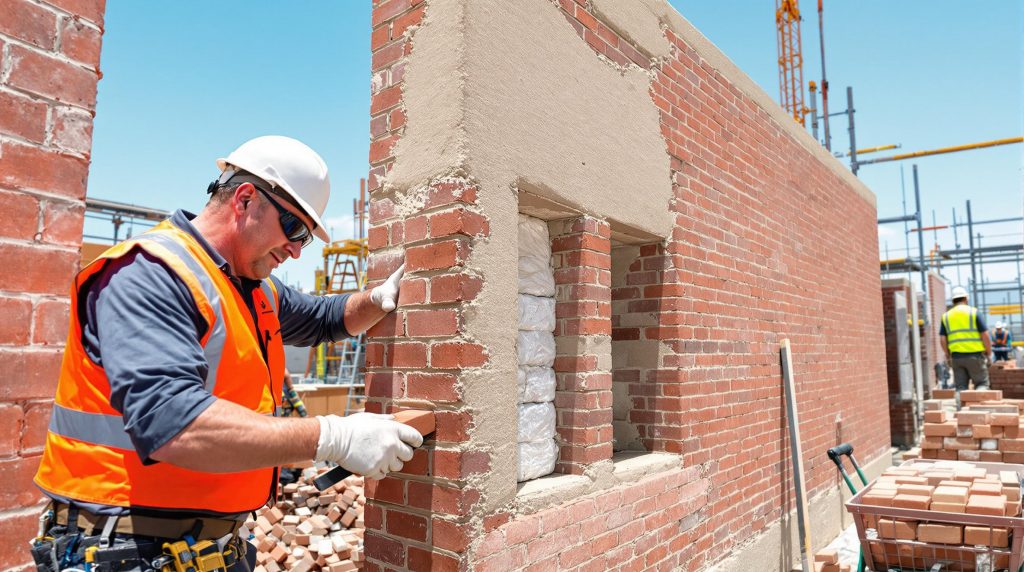How to save on your energy bills? With free cavity wall insulation. This article will guide you through everything you need to know about getting cavity wall insulation for free, from understanding what it is to figuring out if you’re eligible.
Let’s dive into the details and help you unlock those savings!
Key Takeaways
- Cavity wall insulation helps keep your home warm and reduces energy bills by up to £300 a year.
- The ECO4 scheme offers free insulation grants to eligible homeowners, making it a cost-free upgrade.
- Insulation not only cuts energy costs but also boosts your property’s value and comfort.
- Check if you qualify through a free technical survey, which assesses your home’s eligibility.
- Properly installed insulation comes with a 25-year guarantee, providing long-term peace of mind.
Understanding Free Cavity Wall Insulation
What is Cavity Wall Insulation?
Cavity wall insulation is a method used to improve the thermal efficiency of homes. It involves filling the gap between the inner and outer walls of a house with insulating material, like mineral wool or foam.
This process helps keep the heat inside your home, reducing the need for constant heating.
Benefits of Cavity Wall Insulation
- Energy Savings: Proper insulation can slash your energy bills by up to £300 annually.
- Comfort: Keeps your home cosy during winter and cool in summer.
- Environmental Impact: Reduces carbon emissions by lowering energy consumption.
- Property Value: Enhances the energy rating of your home, potentially increasing its market value.
How Cavity Wall Insulation Works
The installation process is pretty straightforward. A professional drills small holes in your home’s exterior walls. Then, they inject insulation material into the cavity.
Once filled, the holes are sealed, leaving your home warmer and more energy-efficient. It’s a quick job, usually completed in a day or two, but the benefits last for years.
Eligibility Criteria for Free Cavity Wall Insulation
Who Qualifies for Free Insulation?
Getting free cavity wall insulation can be a great way to save money on energy bills. To qualify, you generally need to own your home or rent it privately, with your landlord’s permission. Your property should be built before 1983, as newer homes usually meet insulation standards. Receiving certain government benefits can make you eligible, such as:
- Child Benefit
- Child Tax Credit
- Income-Based Jobseeker’s Allowance
- Income-Related Employment Support Allowance
- Income Support
- Pension Guarantee Credit
- Universal Credit
- Working Tax Credit
If someone in your household receives any of these benefits, you might be eligible for free insulation, regardless of your income level.
Understanding the ECO4 Scheme
The ECO4 scheme is a government initiative aimed at improving energy efficiency in homes. Under this scheme, you can apply for free cavity wall insulation if you meet the eligibility requirements.
The scheme covers the cost of materials and installation, ensuring no financial burden on the homeowner. A technical survey may be required to assess your home’s suitability, but this is typically free of charge.
The Great British Insulation Scheme
The Great British Insulation Scheme complements the ECO4 initiative by focusing on reducing carbon emissions and improving energy efficiency in homes across the UK.
It targets low-income and fuel-poor households, offering them free or subsidized insulation solutions. The scheme’s main goal is to support the UK’s commitment to achieving net-zero carbon emissions by 2050.
To participate, applicants must meet specific criteria, often similar to those of the ECO4 scheme, but with additional focus on reducing the household’s carbon footprint.
Applying for these grants not only helps reduce your energy bills but also contributes to a more sustainable environment.
How to Apply for Free Cavity Wall Insulation
Thinking about getting your walls insulated for free? Here’s a simple way to get started:
- Check Eligibility: First, make sure you qualify. There are certain criteria you need to meet, like income levels or specific benefits you might be receiving.
- Contact an approved ECO4 and GBIS installer and book your free survey
Having the right documents on hand when the surveyor comes round:
- Proof of Income: Pay slips or benefits statements.
- Utility Bills: Recent bills to show your current energy usage.
- Identification: A passport or driver’s license to confirm your identity.
Financial Benefits of Free Cavity Wall Insulation

Energy Bill Savings
Imagine slashing your energy bills by hundreds of pounds each year. With cavity wall insulation, that’s not just a dream.
Homeowners can save up to £405 annually, depending on the type of home. Here’s a quick look at potential savings:
| Type of Home | Energy Bill Savings (£/year) |
|---|---|
| Flat/Apartment | 110 |
| Mid-terrace home | 140 |
| Semi-detached home | 235 |
| Detached bungalow | 175 |
| Detached home | 405 |
Impact on Property Value
Adding insulation can boost your home’s value. Why? A better Energy Performance Certificate (EPC) rating makes your property more attractive to buyers.
Homes with good EPC ratings are often priced higher. So, not only do you save on bills, but you also increase your property’s worth.
Long-term Financial Gains
Think about the long game. With insulation, you’re not just saving money now. Over time, these savings add up. Plus, if energy prices rise, your savings could be even more significant. And let’s not forget the potential increase in your home’s value. It’s a win-win.
By insulating your home, you ensure financial savings today and set the stage for even greater benefits in the future. It’s an investment that pays off in more ways than one.
Environmental Impact of Cavity Wall Insulation
Reducing Carbon Emissions
Cavity wall insulation is a game-changer when it comes to slashing carbon emissions. By keeping the heat in, you cut down on the need for constant heating, which in turn reduces the amount of fossil fuels burned.
Imagine a detached home saving up to 1.1 tonnes of CO2 each year. That’s a massive reduction in your carbon footprint and a huge win for the planet.
Improving Home Energy Efficiency
Insulating your cavity walls means your home holds onto heat much better. This translates to needing less energy to keep your house warm. It’s like wrapping your home in a snug blanket that keeps the warmth in and the cold out.
As a result, your heating system doesn’t have to work overtime, leading to significant savings on your energy bills. Insulating cavity walls significantly reduces energy costs and heating bills, while also promoting environmental sustainability.
Supporting Net Zero Goals
The push for net-zero carbon emissions by 2050 is a big deal, and cavity wall insulation helps us get there.
Every insulated home is a step toward this goal, making it easier for the country to meet its targets. It’s not just about saving money; it’s about contributing to a larger mission of environmental responsibility.
By insulating your walls, you’re not only making a smart financial decision but also taking part in a global effort to combat climate change.
In summary, cavity wall insulation offers more than just financial savings. It’s a critical part of reducing emissions, enhancing energy efficiency, and supporting broader environmental targets. It’s a simple step with a significant impact.
Choosing the Right Insulation Provider
What to Look for in an Insulation Provider
Picking the right insulation provider can make a huge difference in your home’s energy efficiency. Experience and certifications are key factors.
Make sure the provider has PAS 2030-2035 certification, which ensures they meet industry standards.
Check if they have a solid track record with positive customer reviews. You want someone reliable who knows what they’re doing.
Questions to Ask Potential Installers
Before you commit, ask potential installers a few important questions:
- How long have you been installing insulation?
- Are you PAS 2030-2035 certified?
- Can you provide references from previous clients?
- What type of insulation materials do you use?
- How do you handle any issues that might arise during installation?
Ensuring Quality and Compliance
Ensuring quality and compliance is crucial. Make sure the installer provides a clear contract outlining the scope of work, costs, and timelines.
Compliance with local regulations is non-negotiable. It’s also important to verify that the provider has insurance coverage in case of any accidents or damages during the installation process.
Choosing the right insulation provider is not just about cost. It’s about getting the job done right, ensuring your home is energy-efficient, and avoiding headaches down the line. Take your time to research and make an informed decision.
Overcoming Challenges in Insulation Installation

Dealing with Complex Installations
Installing cavity wall insulation can sometimes be tricky, especially in older homes with unique structures.
Understanding the intricacies of your home’s design is key to a successful installation. Consider hiring a professional who can assess and navigate these complexities effectively.
They will ensure that the insulation is installed correctly, avoiding any gaps that might lead to heat loss.
Addressing Common Concerns
Homeowners often worry about potential issues like dampness resulting from poor insulation. To prevent this, identify the root cause of any moisture problems and ensure the installation is done correctly.
A reputable installer will use quality materials and techniques to minimize these risks.
Regular checks and maintenance can also help in spotting any early signs of trouble.
Ensuring Proper Maintenance
Once your insulation is in place, maintenance is important for long-term efficiency. Here are some tips:
- Regular Inspections: Schedule yearly inspections to check for any wear and tear.
- Quick Repairs: Address any small issues immediately to prevent them from becoming bigger problems.
Keeping your insulation well-maintained not only extends its lifespan but also ensures your home remains energy-efficient, saving you money in the long run.
Wrapping It Up
With the ECO4 and GBIS schemes, you may qualify for free cavity wall insulation. It’s a win-win: you save on energy bills and help the planet.
Don’t wait too long, though. Check if you qualify and take the first step towards a warmer, more sustainable home today. It’s easier than you think, and the benefits are too good to pass up.
Frequently Asked Questions
What is cavity wall insulation?
Cavity wall insulation is a method used to fill the gap between a home’s inner and outer walls with materials like foam or wool. This helps keep the house warm in winter and cool in summer, reducing energy bills and making the home more comfortable.
Who can get free cavity wall insulation?
You might qualify for free cavity wall insulation if you meet specific criteria under programs like the Great British Insulation Scheme or the Energy Company Obligation. These programs are designed to help people with lower incomes or those living in energy-inefficient homes.
How do I apply for a cavity wall insulation grant?
To apply, you usually need to fill out an application form and possibly have a survey done on your home. You can check online or contact local providers to see if you qualify for grants like ECO4 or the Great British Insulation Scheme.
How much can I save with cavity wall insulation?
By insulating your cavity walls, you can save up to £300 a year on energy bills. This also helps in reducing your home’s carbon footprint, making it a smart choice for both your wallet and the environment.
What happens during the insulation process?
A professional installer will drill small holes in your home’s exterior walls and then fill the cavity with insulating material. Once done, the holes are sealed up, and the process is quick and doesn’t cause much disruption.
Is cavity wall insulation worth it?
Yes, it’s a great way to reduce energy bills and improve home comfort. While there might be an upfront cost, the long-term savings and environmental benefits make it a worthwhile investment.






